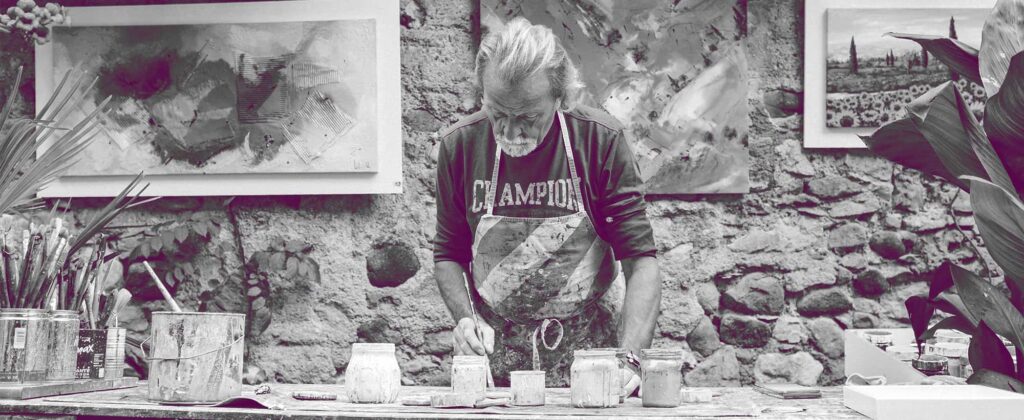Advances in healthcare and technology have contributed to an increase in longevity all over the world. It is especially pronounced in industrialized nations. People are living longer and staying active throughout their life. Older adults are actively pursuing new activities and finding a sense of purpose in their later years.
Living longer also begs the question about living well. No one enjoys growing old, especially as it is often accompanied by deteriorating health. That’s why more senior communities are focused on improving the quality of life for their residents. Creative activities and workshops are one way of achieving this goal.
How can creativity help seniors?
Creative activities have been shown to have a positive effect on both physical and mental health. Even though art therapy has made inroads into healthcare, the effects of creativity on senior health is less examined. However, policymakers and researchers are slowly incorporating arts and crafts activities into the healthcare system.
Being creative can help older adults in many ways. Researchers have identified six features of successful aging [1]:
- Having a sense of purpose
- Interacting with others
- Personal growth
- Self-acceptance
- Being independent and retaining autonomy
- Overall health
As one might guess, creative activity contributes to successful aging by giving older adults a sense of purpose, personal growth oh, and interacting with others. Engaging in a creative pursuit like painting or knitting can motivate seniors to manage their lives and boosts self-esteem.
Benefits of arts and crafts for seniors
Improve community engagement
Much like other community engagement events, creative workshops help your residents to interact with others and reduce isolation. Creative workshops give them the option of working with others in the same room but also pursue their hobby by themselves.
Shy or otherwise non-communicative seniors can also engage in creative pursuits without feeling overwhelmed. It provides an opportunity for your residents to reach out to others interested in the same activities.
Improve mental health
Engaging in creative activities helps with focus and concentration. It is a great way to exercise the brain and stimulate it by pursuing new activities. Arts and crafts like painting, knitting, pottery making, etc. can also slow the deterioration of cognitive function in seniors.
Studies have indicated that art therapy can help senior adults communicate better. It can also alleviate symptoms of depression and anxiety. Individuals diagnosed with dementia or Alzheimer’s disease have shown progress by engaging in art and craft activities.
Form new friendships
A common hobby is one of the easiest ways to cultivate friendships at any age. But it becomes even more important for seniors for several reasons:
- Seniors are often retired and lose touch with professional colleagues
- Moving to a senior community means they lose decades-old friendships
- Their families might live far away and not be able to visit often
These factors contribute to the sense of isolation that many older adults feel. Hence, organizing creative workshops in your community can help your residents form new friendships with like-minded people.
Better physical health
Many people grasp the relationship between creativity and mental health. But being creative can also lead to better physical health. Participating in art and craft activities influences the nervous system and can help stabilize heart rate and hormone levels. It also stimulates the release of endorphins that contribute to overall well-being and happiness.
A recent study showed that elderly people who engaged in art activities reported the following benefits [2]:
- Higher rate of physical health
- Fewer accidental falls
- A decrease in the number and type of medications they needed
- Fewer visits to the doctor
Achieve a sense of purpose and personal growth
Aging is often accompanied by a feeling loss of purpose. Your residents may be retired from an active career. They no longer have children to take care of or a household to run. They may not be interested or be incapable of pursuing educational and technical activities.
A new craft hobby can provide the same sense of purpose and personal growth. If your residents practice their art or craft regularly, they will see an improvement in their skill level. This contributes to regaining a sense of progression and growth in their lives.
Many adults put aside childhood hobbies as they grow in their careers or take care of children. They simply don’t have time. Creative workshops in the residence can help them continue where they left off, perhaps even decades ago!
There are many creative activities you can offer your residents. They are not limited to painting and drawing, as most people think. Consider offering a variety of options like a book club, creative writing, ceramics, knitting, quilting, sewing, collaging, etc. Depending on the number of participants and level of interest, you can even organize regular clubs around some of the activities.

